Kenneth C. Davis's Blog, page 74
September 18, 2015
Friday Quiz: What law passed on Sept. 18 inspired “Uncle Tom’s Cabin”?
Answer: The Fugitive Slave Act of 1850.
Frederick Douglass would call it the “man-stealing act.”
The only way to make the Fugitive Slave Law a dead letter is to make half a dozen or more dead kidnappers. … There is more protection there for a horse, for a donkey, or anything rather than a colored man — who is therefore justified in maintaining his right with his arm.
Under the Fugitive Slave Act, aid to escaping slaves was a federal crime, punishable by a $1,000 fine and six months in prison. Under a bounty system, the law created the office of commissioners, who determined whether a black person was in fact a slave. They were paid $10 for every slave they returned to slavery but only $5 for every one they determined to be free.
Ralph Waldo Emerson said, “I will not obey it, by God.”
Harriet Beecher Stowe decided to begin a series of sketches of life among enslaved people that was serialized in the National Era. In March 1852, they were published in book form as Uncle Tom’s Cabin, or Life Among the Lowly.
Read more in Don’t Know Much About the Civil War.
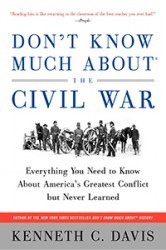
Don’t Know Much About the Civil War (Harper paperback, Random House Audio)
September 17, 2015
Constitution Day Pop Quiz: Who was the first man to sign the Constitution?
Answer: On September 17, Washington signed the parchment copy first, as President of the convention.
On September 17, 1787, 39 delegates to the Constitutional Convention meeting in Philadelphia, voted to adopt the United States Constitution.

United States Constitution (Image Courtesy of the National Archives)
To recap these events:
Working from May 25, when a quorum was established, until September 17, 1787, when the convention voted to endorse the final form of the Constitution, the delegates gathered in Philadelphia’s Pennsylvania State House were actually obligated only to revise or amend the Articles of Confederation. Under those Articles, however, the government was plagued by weaknesses, such as its inability to raise revenues to pay its foreign debts or maintain an army. From the outset, most the convention’s organizers, James Madison chief among them, knew that splints and bandages wouldn’t do the trick for the broken Articles.
The government was broke –literally and figuratively– and they were going to fix it by inventing an entirely new one. James Madison had been studying more than 200 books on constitutions and republican history sent to him by Thomas Jefferson in preparation for the convention. The moving force behind the convention, Madison came prepared with the outline of a new Constitution.
A reluctant George Washington, whose name was placed at the head of list of Virginia’s delegates without his knowledge, was unquestionably spurred by recent events in Massachusetts (Shay’s Rebellion, a violent protest by Massachusetts farmers). Elected president of the convention, he wrote from Philadelphia in June to his close wartime confidant and ally, the Marquis de Lafayette:
I could not resist the call to a convention of the States which is to determine whether we are to have a government of respectability under which life, liberty, and property will be secured to us, or are to submit to one which may be the result of chance or the moment, springing perhaps from anarchy and Confusion, and dictated perhaps by some aspiring demagogue.
On September 17, Washington signed the parchment copy first, as President of the convention. He was followed by the remaining delegates from the twelve states that sent delegates in geographical order, from north to south, beginning with New Hampshire. (Rhode Island was the only state that did not send a delegation.) When the last of the signatures was added –that of Abraham Baldwin of Georgia– Benjamin Franklin gazed at Washington’s chair, on which was painted a bright yellow sun. He then spoke, as James Madison recorded it:
I have, said he, often in the course of a session, and the vicissitudes of my hopes and fears as to its issue, looked at that behind the President without being able to tell if it was rising or setting: But now at length I have the happiness to know that it is a rising and not a setting sun.
In another perhaps more apocryphal tale, Franklin left the building and was confronted by a lady who asked, “Well Doctor, do we have a monarchy or a republic?” The witty sage of Philadelphia replied,
“A republic, madam, if you can keep it.”
This post is excerpted from America’s Hidden History, which offers fuller account of the Convention and the events that led to it. You can also read more about the Constitutional Convention and the Constitution in Don’t Know Much About History: Anniversary Edition.
For more about the Constitution, visit these sites:
The National Constitutional Center in Philadelphia:
Charters of Freedom at the National Archives

New York Times Bestseller
America’s Hidden History
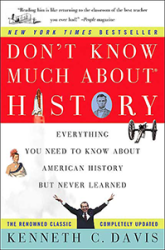
Don’t Know Much About® History: Anniversary Edition (Harper Perennial and Random House Audio)
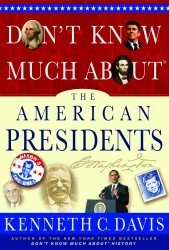
Don’t Know Much About® the American Presidents-now available in hardcover and eBook and audiobook
September 16, 2015
The Hidden History of America At War (C-Span video)
I recently spoke at the historic Fraunces Tavern Museum in Lower Manhattan about my new book THE HIDDEN HISTORY OF AMERICA AT WAR: Untold Tales from Yorktown to Fallujah.
The event was filmed by C-Span and can be seen here.
Fraunces Tavern was the scene of Washington’s farewell to his troops in 1783. The book includes a chapter about the battle of Yorktown.
Read more about these events in…

The Hidden History of America At War (Hachette Books Random House Audio)
September 15, 2015
Who Said It? (9/19)
President George Washington: “Farewell Address” (September 19, 1796)
“Let me now take a more comprehensive view, and warn you in the most solemn manner against the baneful effects of the spirit of party generally.”
Addressed “To the PEOPLE of the UNITED STATES,” Washington’s Farewell was published as a letter in David Claypoole’s American Daily Advertiser, a Philadelphia newspaper. First drafted during Washington’s first term by James Madison, the text was sent to Alexander Hamilton with Washington’s notes added as his second term came to an end and the election of 1796 approached. The final version was written by Hamilton.
Washington and Hamilton biographer Ron Chernow wrote:
“It was not in Hamilton’s headstrong nature to bow to another scribe, and while he would offer Washington a revised version of Madison’s 1792 address, he also forged a magisterial new version of his own.”
Washington: A Life (page 753)
And it is considered, according to the Library of Congress, “one of the most important documents in American history.”
All obstructions to the execution of the laws, all combinations and associations, under whatever plausible character, with the real design to direct, control, counteract, or awe the regular deliberation and action of the constituted authorities, are destructive of this fundamental principle and of fatal tendency. They serve to organize faction; to give it an artificial and extraordinary force; to put in the place of the delegated will of the nation the will of a party, often a small but artful and enterprising minority of the community, and, according to the alternate triumphs of different parties, to snake the public administration the mirror of the ill-concerted and incongruous projects of faction rather than the organ of consistent and wholesome plans, digested by common counsels and modified by mutual interests.
However combinations or associations of the above description may now and then answer popular ends, they are likely in the course of time and things to become potent engines by which cunning, ambitious, and unprincipled men will be enabled to subvert the power of the people, and to usurp for themselves the reins of government, destroying. afterwards the very engines which have lifted them to unjust dominion.
Toward the preservation of your Government and the permanency of your present happy state, it is requisite not only that you steadily discountenance irregular oppositions to its acknowledged authority, but also that you resist with care the spirit of innovation upon its principles, however specious the pretexts. One method of assault may be to effect in the forms of the Constitution alterations which will impair the energy of the system, and thus to undermine what can not be directly overthrown. In all the changes to which you may be invited remember that time and habit are at least as necessary to fix the true character of governments as of other human institutions; that experience is the surest standard by which to test the real tendency of the existing constitution of a country; that facility in changes upon the credit of mere hypothesis and opinion exposes to perpetual change, from the endless variety of hypothesis and opinion; and remember especially that for the efficient management of your common interests in a country so extensive as ours a government of as much vigor as is consistent with the perfect security of liberty is indispensable. Liberty itself will find in such a government, with powers properly distributed and adjusted, its surest guardian. It is, indeed, little else than a name where the government is too feeble to withstand the enterprises of faction, to confine each member of the society within the limits prescribed by the laws, and to maintain all in the secure and tranquil enjoyment of the rights of person and property.
I have already intimated to you the danger of parties in the State, with particular reference to the founding of them on geographical discriminations. Let me now take a more comprehensive view, and warn you in the most solemn manner against the baneful effects of the spirit of party generally.
This spirit, unfortunately, is inseparable from our nature, having its root in the strongest passions of the human mind. It exists under different shapes in all governments, more or less stifled, controlled, or repressed; but in those of the popular form it is seen in its greatest rankness and is truly their worst enemy.
Source and Complete Text: George Washington: “Farewell Address,” September 19, 1796. Online by Gerhard Peters and John T. Woolley, The American Presidency Project.

Don’t Know Much About® the American Presidents (Hachette Paperback-April 15, 2014)
September 14, 2015
Don’t Know Much About® Field Trip: the National Anthem
(Video shot, edited and produced by Colin Davis)
Two hundred and one years ago, Francis Scott Key penned the words that later became the national anthem. This video is from my 2009 field trip to Fort McHenry.
It was September 13, 1814. America was at war with England for the second time since 1776. Francis Scott Key was an attorney attempting to negotiate the return of a civilian prisoner held by the British who had just burned Washington DC and had set their sights on Baltimore. As the British attacked the city, Key watched the naval bombardment from a ship in Baltimore’s harbor. In the morning, he could see that the Stars and Stripes still flew over Fort McHenry. Inspired, he wrote the lyrics that we all know –well some of you know some of them.
But here’s what they didn’t tell you:
•Yes, Washington, D.C. was burned in 1814, including the President’s Home which would later get a fresh coat of paint and be called the “White House.” But Washington was torched in retaliation for the burning of York –now Toronto—in Canada earlier in the war.
•Yes, Key wrote words. But the music comes from an old English drinking song. Good thing it wasn’t 99 Bottles of Beer on the Wall.Here’s a link to the original lyrics of that drinking song To Anacreon in Heaven via Poem of the Week.
•The Star Spangled Banner did not become the national anthem until 1916 when President Wilson declared it by Executive Order. But that didn’t really count. Finally, in 1931, it became the National Anthem by Congressional resolution signed by President Herbert Hoover, on March 3.
Now, here are a couple of footnotes to the Francis Scott Key story—his son, Philip Barton Key, was a District Attorney in Washington. DC. He was shot and killed by Congressman Daniel Sickles. Sickles was acquitted with the first use of the defense of temporary insanity in 1859. And went on to serve as a Civil War general –and not a very good one.
And speaking of the Civil War, Key’s grandson was later imprisoned in Fort McHenry along with Baltimore’s Mayor and other pro-Confederate sympathizers.
Here are some places to learn more about Fort McHenry, Francis Scott Key and the Flag that inspired the National Anthem: Fort McHenry National Monument and Historic Shrine
The images and music in this video are courtesy of the Smithsonian Museum of American History
This version of the anthem in the video is performed on 19th century instruments also courtesy of the Smithsonian Museum.

Don’t Know Much About® History: Anniversary Edition (Harper Perennial and Random House Audio)
September 10, 2015
How History Gets Hidden

Fort Matanzas Courtesy National Park Service
People often ask me how history gets hidden. The answer is simple. It is all about the way we cover up the past to present a tidy version that makes for a nice travelogue. But that is how history gets buried in myth and misconception.
A perfect example is a current article at Smithsonian.com called “The Oldest City in the United States” — St. Augustine, Florida. St. Augustine was settled in September 1565, as the article points out, highlighting its 450th anniversary. But the article neglects –or obscures– the real reason that that Spanish came to Florida.
About a year earlier, French Protestants –or Huguenots– had started a colony called Fort Caroline, not far from present-day Jacksonville. The Spanish fleet sent to Florida was ordered to remove these “heretics” from territory that Spain claimed. The result was the massacre of the entire colony. Shipwrecked French sailors, caught in a hurricane, were later put to death at a spot now called “Matanzas” –the Spanish word for ‘slaughters.”
I told this story in my book America’s Hidden History –an excerpt from the book appeared in Smithsonian in 2008 as “America’s First True ‘Pilgrims'”
I like Smithsonian Magazine and have often contributed to the print and online editions in the past. But we have to expect more when we tell our history. Or else it is just another piece of “cherry tree” history.
Read the full account of the first “Pilgrims” in America’s Hidden History.
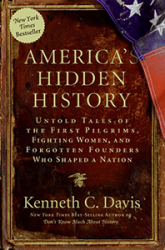
America’s Hidden History, includes tales of “Forgotten Founders”
September 9, 2015
THE HIDDEN HISTORY OF AMERICA AT WAR-Speaking Calendar
List of Upcoming Speaking Engagements:

The lawn outside the Camden (Me.) Public Library and Camden Harbor
Thursday October 27 Camden Public Library Camden, Maine 7 PM
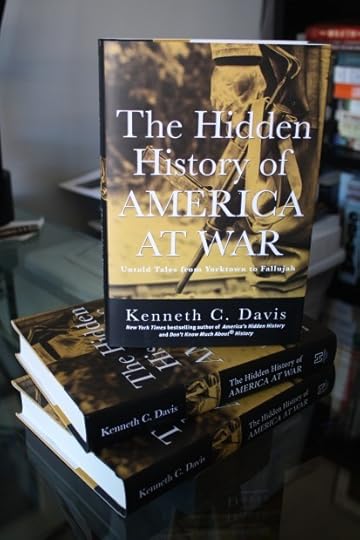
THE HIDDEN HISTORY OF AMERICA AT WAR: Untold Tales from Yorktown to Fallujah (May 5-Hachette Books/Random House Audio)
Sunday 9/13 Ash-Lawn Highland QUIZ SHOW! THE HIDDEN HISTORY OF AMERICA AT WAR-Speaking Calendar
List of Upcoming Speaking Engagements:
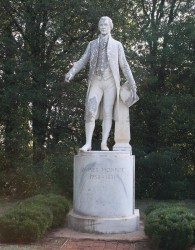
Statue of President James Monroe in the Garden at Ash Lawn-Highland
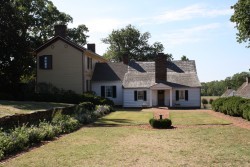
Ash Lawn-Highland Home of President James Monroe
September 13 Ash Lawn-Highland (Home of President James Monroe) 1-3 PM
THIS IS A FAMILY FRIENDLY EVENT CELEBRATING NATIONAL LITERACY MONTH. Ash Lawn-Highland is located a short distance from Thomas Jefferson’s Monticello.

THE HIDDEN HISTORY OF AMERICA AT WAR: Untold Tales from Yorktown to Fallujah (May 5-Hachette Books/Random House Audio)
August 31, 2015
Why Labor Day? Check out this Ted-Ed animated video
“Why do Americans and Canadians Celebrate Labor Day?”
This Ted-Ed animated video explains the history of the holiday and why it still matters today. (Reposted from 9/1/2014)
You can also view it on YouTube:
Read more about the period of labor unrest in Don’t Know Much About® History.
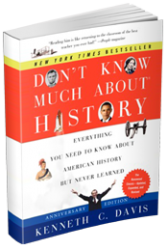
Don’t Know Much About History (Revised, Expanded and Updated Edition)
Who Said It? (8/31/2014-Labor Day edition)
(Reposted from 2014)

Abraham Lincoln (November 1863) Photo by Alexander Gardner
Abraham Lincoln, “First Annual Message to Congress” (“State of the Union”) December 3, 1861
It is not needed nor fitting here that a general argument should be made in favor of popular institutions, but there is one point, with its connections, not so hackneyed as most others, to which I ask a brief attention. It is the effort to place capital on an equal footing with, if not above, labor in the structure of government. It is assumed that labor is available only in connection with capital; that nobody labors unless somebody else, owning capital, somehow by the use of it induces him to labor. This assumed, it is next considered whether it is best that capital shall hire laborers, and thus induce them to work by their own consent, or buy them and drive them to it without their consent. Having proceeded so far, it is naturally concluded that all laborers are either hired laborers or what we call slaves. And further, it is assumed that whoever is once a hired laborer is fixed in that condition for life.
Now there is no such relation between capital and labor as assumed, nor is there any such thing as a free man being fixed for life in the condition of a hired laborer. Both these assumptions are false, and all inferences from them are groundless.
Labor is prior to and independent of capital. Capital is only the fruit of labor, and could never have existed if labor had not first existed. Labor is the superior of capital, and deserves much the higher consideration. Capital has its rights, which are as worthy of protection as any other rights.
Source and Complete text: Abraham Lincoln: “First Annual Message,” December 3, 1861. Online by Gerhard Peters and John T. Woolley, The American Presidency Project.
Read more about Lincoln, his life and administration and the Civil War in Don’t Know Much About® History, Don’t Know Much About® the Civil War and Don’t Know Much About® the American Presidents

Don’t Know Much About the Civil War (Harper paperback, Random House Audio)

Don’t Know Much About® History: Anniversary Edition (Harper Perennial and Random House Audio)

Don’t Know Much About® the American Presidents (Hyperion Paperback-April 15, 2014)




